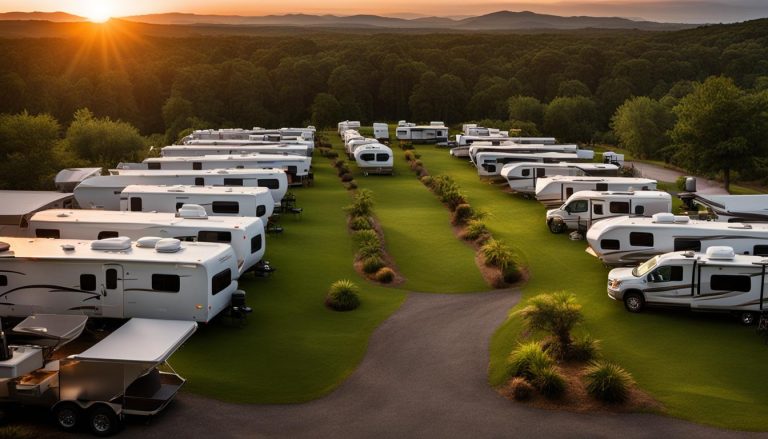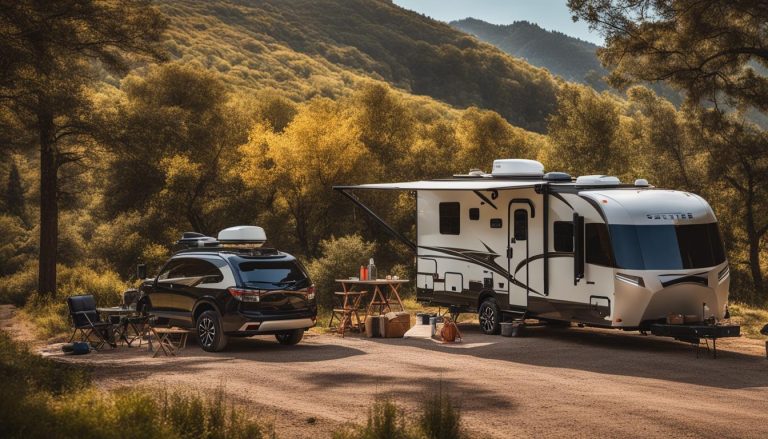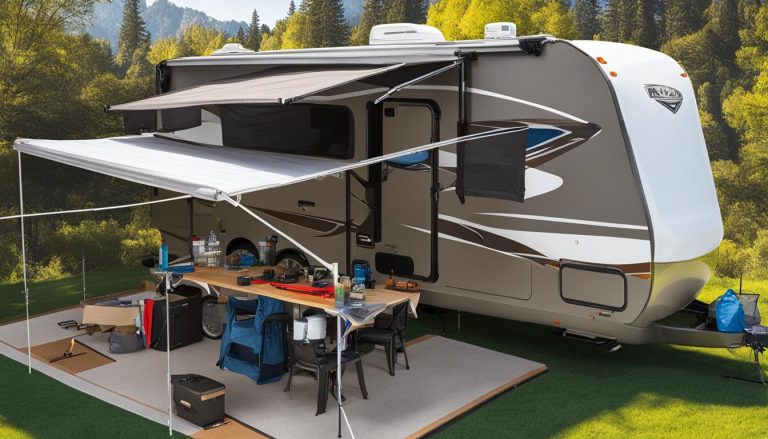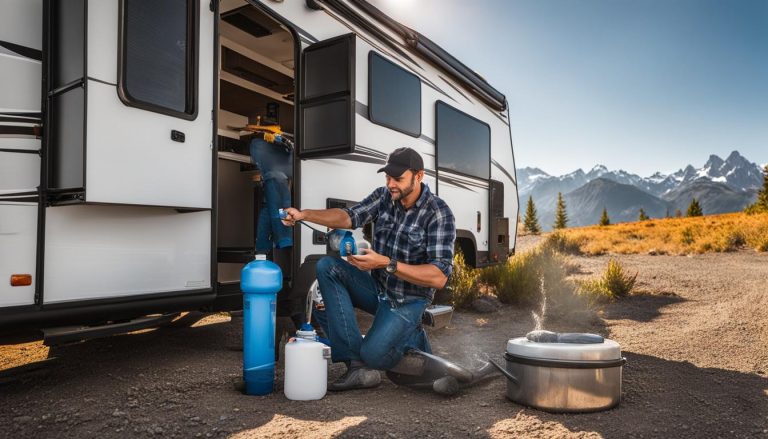Prevent RV Window Condensation Effectively
gorvlifestyle.com and its partners may earn a commission if you purchase a product through one of our links
Condensation on RV windows can be a frustrating issue, obstructing your view and creating a damp environment. To effectively prevent window condensation in your RV, it’s important to understand the causes and implement effective solutions.
Condensation occurs when warm, moist air comes into contact with a cool surface, causing water droplets to form. Factors such as cooking, showering, using propane accessories, weather, and even breathing can contribute to increased moisture levels in your RV.
To prevent condensation, consider cooking outside, showering outside or using campground showers, avoiding wet clothes inside the RV, opening windows and doors for ventilation, using exhaust fans and dehumidifiers, running the air conditioning, avoiding humid climates, insulating windows, and properly maintaining your RV. By implementing these tips, you can significantly reduce condensation on your RV windows and create a moisture-free environment for an enjoyable travel experience.
Key Takeaways:
- Condensation occurs when warm, moist air meets a cool surface.
- Cooking, showering, weather, and breathing contribute to increased moisture levels in an RV.
- Prevent condensation by cooking outside, using campground showers, and avoiding wet clothes inside the RV.
- Ensure proper ventilation by opening windows and doors.
- Use exhaust fans, dehumidifiers, and running the air conditioning to reduce moisture levels.
Understanding Condensation in an RV
Condensation can be a common issue in RVs, especially on the windows. It occurs when warm, moist air comes into contact with cooler surfaces, causing water droplets to form. To effectively reduce condensation and avoid moisture buildup in your RV windows, it’s important to understand the factors that contribute to it.
Several factors can increase moisture levels inside an RV, leading to condensation. Cooking on the stovetop, taking hot showers, using propane accessories, doing laundry with warm water, humid weather, and even breathing can all contribute to the moisture in the air. When this warm, moist air comes into contact with the cooler surfaces of your RV windows, condensation occurs.
To reduce condensation and maintain a comfortable environment, there are several measures you can take:
- Cook outside whenever possible to minimize moisture buildup inside the RV.
- Utilize campground showers instead of showering inside the RV to reduce humidity levels.
- Hang wet clothes outside to dry, rather than keeping them inside the RV.
- Open windows and doors for increased ventilation, allowing the moist air to escape.
- Use exhaust fans and dehumidifiers to help circulate air and remove excess moisture.
By being mindful of these factors and following these tips, you can effectively reduce moisture buildup and minimize condensation on your RV windows. This will create a more comfortable and enjoyable environment during your travels.
Quotes:
“Understanding the causes of condensation is essential for preventing moisture buildup on RV windows.” – RV Camper Magazine
| Factors Contributing to Condensation | Prevention Tips |
|---|---|
| Cooking on the stovetop | Cook outside whenever possible to minimize moisture buildup inside the RV. |
| Taking hot showers | Utilize campground showers instead of showering inside the RV to reduce humidity levels. |
| Using propane accessories | Be mindful of propane usage and ensure proper ventilation to minimize moisture in the air. |
| Doing laundry with warm water | Consider using Laundromats or campsite facilities to reduce moisture inside the RV. |
| Humid weather | Use dehumidifiers and open windows to improve air circulation and reduce humidity. |
| Breathing | Properly ventilate the RV and consider using exhaust fans to remove excess moisture. |
Tips for Preventing Condensation Inside Your RV
Preventing condensation inside your RV is crucial for maintaining a comfortable and moisture-free environment. Here are some practical tips to help you eliminate condensation on your RV windows and prevent window sweating:
- Cook outside: When cooking inside your RV, steam from boiling water or cooking soup can increase humidity levels. By cooking outside whenever possible, you can reduce moisture build-up inside your RV.
- Utilize campground showers: Instead of showering inside your RV, consider using the campground showers. This can help reduce the amount of moisture released into the air and minimize condensation.
- Avoid keeping wet clothes inside: Wet clothes can contribute to increased humidity levels. Instead of leaving them inside your RV, hang them outside to dry.
- Open windows and doors: Opening windows and doors when weather conditions allow can promote airflow and help reduce moisture levels inside your RV.
- Ventilate closed spaces: Closed spaces such as closets and cabinets can trap moisture. Ensure proper ventilation in these areas to prevent condensation.
- Install exhaust fans: High-humidity areas, such as above stoves and in bathrooms, can benefit from the installation of exhaust fans. These fans effectively remove warm, humid air, reducing the risk of condensation.
- Use a dehumidifier: A dehumidifier can help remove excess moisture from the air inside your RV, preventing condensation and maintaining a dry environment.
- Run the air conditioning: On hot and humid days, running the air conditioning not only cools the air but also reduces indoor humidity levels, combating condensation.
Expert Tip:
“By following these practical tips, you can effectively eliminate condensation on your RV windows and create a comfortable, moisture-free environment for your travels.”
Implementing these tips will significantly reduce condensation on your RV windows and help you enjoy a pleasant and dry camping experience. By taking proactive measures to minimize moisture levels inside your RV, you can prevent window sweating and maintain optimal comfort.

Insulating RV Windows for Condensation Prevention
Insulating your RV windows is crucial for effectively managing moisture and preventing condensation buildup. RV windows are often single-pane windows, which provide minimal insulation against temperature differences and moisture transfer. Fortunately, there are several options to enhance insulation and reduce condensation on your RV windows.
Upgrade to Double-Pane Windows
Consider upgrading to double-pane windows if it is an option for your RV. Double-pane windows have an air gap between two layers of glass, creating insulation and minimizing temperature differences between the interior and exterior surfaces. This helps reduce condensation formation and moisture buildup.
Add Insulating Window Coverings
If upgrading to double-pane windows is not feasible, you can still improve insulation by adding window coverings. Curtains or heat-activated window film provide an extra layer of insulation and help reduce heat transfer and condensation. These coverings act as a barrier to control temperature and moisture levels inside your RV.
Use Clear Vinyl or Plexiglass Panels
Another effective alternative is to use clear vinyl or plexiglass panels to cover your RV windows. These materials act as an additional barrier to reduce heat transfer and provide insulation. By creating a buffer between the interior and exterior surfaces, you can minimize temperature differences and manage moisture effectively.
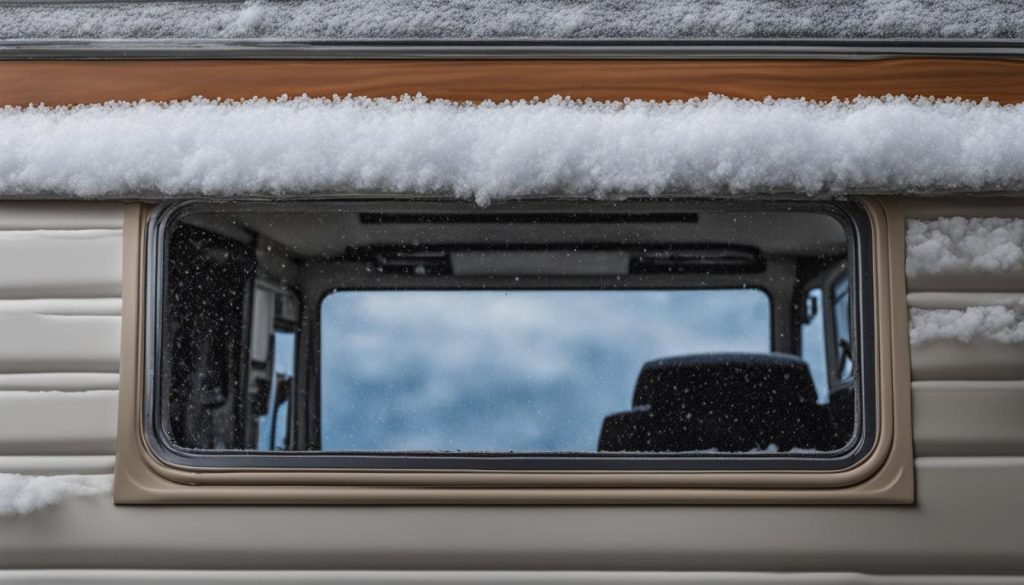
Note: Image shows an example of insulating RV window with clear vinyl panel.
Insulating your RV windows is a practical solution to prevent condensation and maintain a comfortable environment. Whether you choose to upgrade to double-pane windows, add window coverings, or use clear vinyl or plexiglass panels, these insulation measures can significantly reduce moisture-related issues in your RV.
The Importance of Managing Condensation in an RV
Managing condensation in your RV is crucial for maintaining a comfortable, healthy living space. Excessive condensation can give rise to mold and mildew growth, leading to unpleasant odors and potential health problems. Additionally, it can cause delamination of walls and surfaces, weakening the adhesive bonds and compromising the structural integrity of your RV. Neglected moisture can even result in rot, causing severe damage to your vehicle.
Furthermore, condensation on your RV windows can pose a safety hazard by obstructing visibility while driving. To ensure a warm, dry, and safe environment, it is essential to effectively manage condensation and reduce moisture levels inside your RV.
Regular maintenance, proper insulation, and implementing moisture reduction strategies are key to preventing these issues. By taking proactive measures, you can maintain a comfortable environment, prevent potential damage caused by condensation, and ensure a pleasant and safe travel experience.
FAQ
How can I prevent condensation on my RV windows?
To prevent condensation on your RV windows, consider cooking outside, showering outside or using campground showers, avoiding wet clothes inside the RV, opening windows and doors for ventilation, using exhaust fans and dehumidifiers, running the air conditioning, avoiding humid climates, insulating windows, and properly maintaining your RV. By implementing these tips, you can significantly reduce condensation on your RV windows and create a moisture-free environment for an enjoyable travel experience.
What causes condensation on RV windows?
Condensation occurs when warm, moist air comes into contact with cooler surfaces such as RV windows. Factors such as cooking, showering, using propane accessories, weather, and even breathing contribute to increased moisture levels in your RV. When these warm, moist air particles come into contact with the cooler window surfaces, water droplets form and create condensation.
How can I prevent condensation inside my RV?
Practical tips for preventing condensation inside your RV include cooking outside to reduce moisture levels, using campground showers instead of showering inside, avoiding keeping wet clothes inside, opening windows and doors for increased ventilation, ventilating closed spaces such as closets and cabinets, installing exhaust fans and using dehumidifiers, and running the air conditioning on hot and humid days to reduce indoor humidity levels.
How can I insulate my RV windows to prevent condensation?
Insulating your RV windows is an effective way to prevent condensation. You can upgrade to double-pane windows, which have an air gap between two layers of glass that helps create insulation and minimize temperature differences. If upgrading is not an option, you can add window coverings such as curtains or heat-activated window film for insulation. Another alternative is to use clear vinyl or plexiglass panels to cover the windows, creating a barrier that helps reduce heat transfer and condensation.
Why is it important to manage condensation in an RV?
Managing condensation in an RV is important to prevent issues such as mold and mildew growth, which can cause unpleasant odors and health problems. It can also lead to delamination of walls and surfaces, rot, and structural damage. Additionally, condensation on windows can obstruct visibility while driving, posing a safety hazard. By effectively managing condensation and reducing moisture levels, you can prevent these issues and ensure a warm, dry, and healthy living space.

